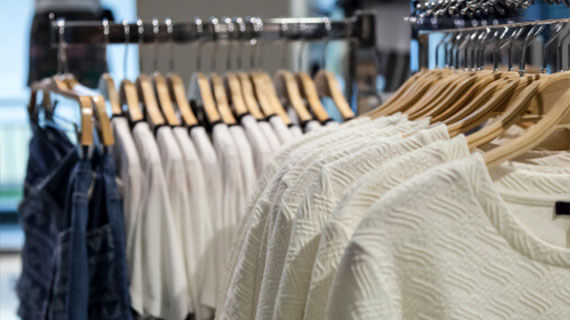Establishing the Retail Merchandise Mix
Retail Product Merchandising
Establishing the Merchandise Mix (Section 2)
Establishing the Merchandise Mix addresses in-depth all of the components of the merchandise mix. Part 1 (1-1 to 1-8) consists of definitions, explanations, and examples of the types of merchandise in the garment industry, industrial zones in the apparel industry, the style structure of the fashion apparel segment, and the product life cycle of the product categories in the merchandise mix.
You’ll Learn:
- How trend modifiers impact the mix
- Pricing strategies needed for a profitable retail store
- Types of brands carried by retailers in order to build a saleable and profitable merchandise assortment.
Types of Merchandise
There are numerous types of products available for purchase and consumption by the target consumer. Companies produce transportation products such as automobiles, boats, and motorcycles, or they produce electronic devices such as televisions, radios, and cell phones or iPods. Others produce sporting goods equipment such as fishing rods, bows, skateboards, and baseballs or basketballs.
Another major industry segment producing a variety of products is the fiber/textile/apparel and home furnishings/retail (FTAR) complex. Furthermore, the FTAR Complex frequently produces component materials and fabrications for many other industry segments. For example, fiber companies create products for materials in airplane and boat construction, as well as electronic devices.
Industry Zones in the Apparel Industry
Fashion products, especially in the women’s wear industry, are categorized by the industry zone in which they are produced and marketed.
The industry has designated these zones as:
- Haute Couture or couture
- Designer
- Bridge
- Contemporary
- Better
- Moderate
- Popular price/budget/mass
- Discount/off-price
Style Structure in the Apparel Segment
In the United States, the organizational style structure of the women’s apparel industry is built upon designer merchandise that may be sourced from either well-known designers who operate their own design companies or from branded apparel companies who hire name designers to create their seasonal lines. However, the majority of merchandise available in the United States is ready-to-wear (RTW) or mass-produced merchandise. This merchandise is developed by U.S. manufacturers and is produced sometimes in domestic factories but is most often sourced from international manufacturers and contractors.
Product Life Cycle
All products evolve through various stages of the product life cycle (i.e., product development, introduction, growth, maturity, and decline). However, the speed of the movement, the staying power, and the direction of the life cycle stages vary based upon each type of product and its acceptance. For example, some products are developed and introduced into the marketplace only to fade and die quickly. Other products may remain in the market for many years before they are displaced with new innovative products.
Product Categories
Branded apparel companies and apparel producers specialize in producing product based not only on management’s decision regarding which industry zone in which to produce and market product, but also based on the management’s and employees’ skill level and expertise in designing and constructing the product. These companies produce product categories, or clusters of products, that target a specific consumer’s lifestyle, gender, and size range as well as price range. For example, companies that design and produce outerwear coats do not make swimsuits. Or, apparel companies that specialize in streetwear dresses do not design and produce bridal gowns or jeans.
Furthermore, the product categories are usually subdivided into product classifications or an assortment of products that can substitute for other products. For example, tops can be classified as tee shirts, dress shirts, or blouses. Any of these classifications will substitute for the other if a specific end-use, the occasion of wear, or apparel need is identified. The women’s wear (i.e., ladies wear) segment is probably the most highly segmented and fastest-changing market in the apparel industry.
Trend Modifiers
Trend modifiers are current industry, market, or societal customs, modes, or norms in vogue that impact consumers’ opinions and purchasing patterns for specific product categories and classifications. At any given time, there are many trends that drive the FTAR industry and society in general.
For example, three trends that are currently influencing all products are:
- Social accountability or social compliance for the production of products
- Sustainability (i.e., design to packaging) of the environment
- Consumer desirability for luxury products
Pricing Strategies
When establishing the retail merchandise mix, the retailer must consider the “right price” for each product classification in order to attract and retain the store’s target consumer. Price is the terminology to designate the retail price of a product while cost is the term to denote the wholesale cost of that same product. Therefore, the retailer pays wholesale cost to the vendor for products purchased to build the store’s merchandise mix.
Types of Brands
A major decision which the retailer must make is that of selecting the brands of merchandise to include in the store’s merchandise mix. This decision is one of the most important factors in building a merchandise mix that attracts the store’s target consumer. Often the decision depends upon the channel of distribution in which the retailer operates or the industry zone in which the retailer procures merchandise. Therefore, the retailer has a monumental task of selecting and combining brands that reflect the desires of the target consumer and that establish store and fashion image.










